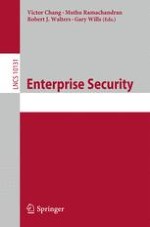Enterprise security is an important area since all types of organizations require secure and robust environments, platforms and services to work with people, data and computing applications. The book provides selected papers of the Second International Workshop on Enterprise Security held in Vancouver, Canada, November 30-December 3, 2016 in conjunction with CloudCom 2015.
The 11 papers were selected from 24 submissions and provide a comprehensive research into various areas of enterprise security such as protection of data, privacy and rights, data ownership, trust, unauthorized access and big data ownership, studies and analysis to reduce risks imposed by data leakage, hacking and challenges of Cloud forensics.
